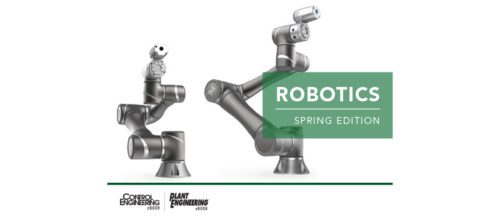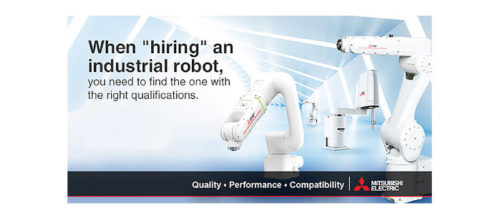Linear bearing advantages
Back to Basics: Linear crossed bearings can deliver more precise motion control than spherical bearings, along with higher loads and greater rigidity.
|
Resin retainer fits around the roller so the whole shape can contact the load. Rollers can be closer.
|
|
Studs in raceway depressions prevent cage creep. Deeper V-grooves allow greater roller contact.
|
|
Metal cages hold the rollers via a notch on the top and on the bottom of the rollers.
|
| Images courtesy of NB Corporation of America |
Microprocessor manufacturing, diagnostic equipment and automation demand motion control with higher precision. In such demanding applications, linear crossed bearings can deliver more precise motion control than spherical bearings. For wafer manufacturing, robotics, vision inspection, and high-tech microscopes, crossed roller bearings or slides are increasingly used. In these crossed roller bearings, the cylinder-shaped bearings crisscross each other at a 90° angle and move between the two parallel guides. Rollers are positioned between “V” grooved bearing ways or raceways ground out of the guides.
More metal, greater loads
Roller-to-rail contact determines load capacity. Rollers provide a larger contact area than ball bearings and, since the rollers usually do not re-circulate, they all carrying the load, producing greater rigidity and higher load capacity than ball bearings. Because load capacity correlates with contact area, the small space between the rollers can make a 250% load difference. Metal cages hold the rollers via a notch on the top and bottom of the rollers. A resin retainer fits around the roller, offering a 30% to 58% increase of contact area, compared to a metal cage.
Metal cages, however, are less expensive, can be all stainless or steel, and can be used in high temperature or medical applications, with water and rust resistant potential. Resin can experience outgas situations—causing problems in high vacuum environments.
With crossed roller bearings, the assembly must be twice as long as the stroke because the rails move in opposite directions. A few crossed roller linear guide products have re-circulating crossed rollers that are not criss-crossed—four circulations with opposite roller orientations. Resin cage allows a longer stroke length on a given length rail because the cage can be shorter for a given load. There is little or no difference between static and dynamic frictional resistances.
For motion control applications with extremely fast acceleration and deceleration (at dimensions ranging from 30-600 mm lengths, 2-12 mm rollers) linear crossed bearings can endure 150 million cycles. Anti-cage creep mechanisms in crossed roller bearings designs can extend the life of guides and avoid readjustments caused by uneven preloading.
Larger contact area of crossed rollers provides consistently precise movement, and non-recirculation has less frictional resistance fluctuation, making them extremely quiet and smooth. Linear bearing rigidity means less mounting surface inaccuracy, up to 2 microns maximum of allowable deflection.
| Author Information |
| Naoki Yamaguchi is assistant technical manager for NB Corporation of America, www.nbcorporation.com . |
Do you have experience and expertise with the topics mentioned in this content? You should consider contributing to our CFE Media editorial team and getting the recognition you and your company deserve. Click here to start this process.



